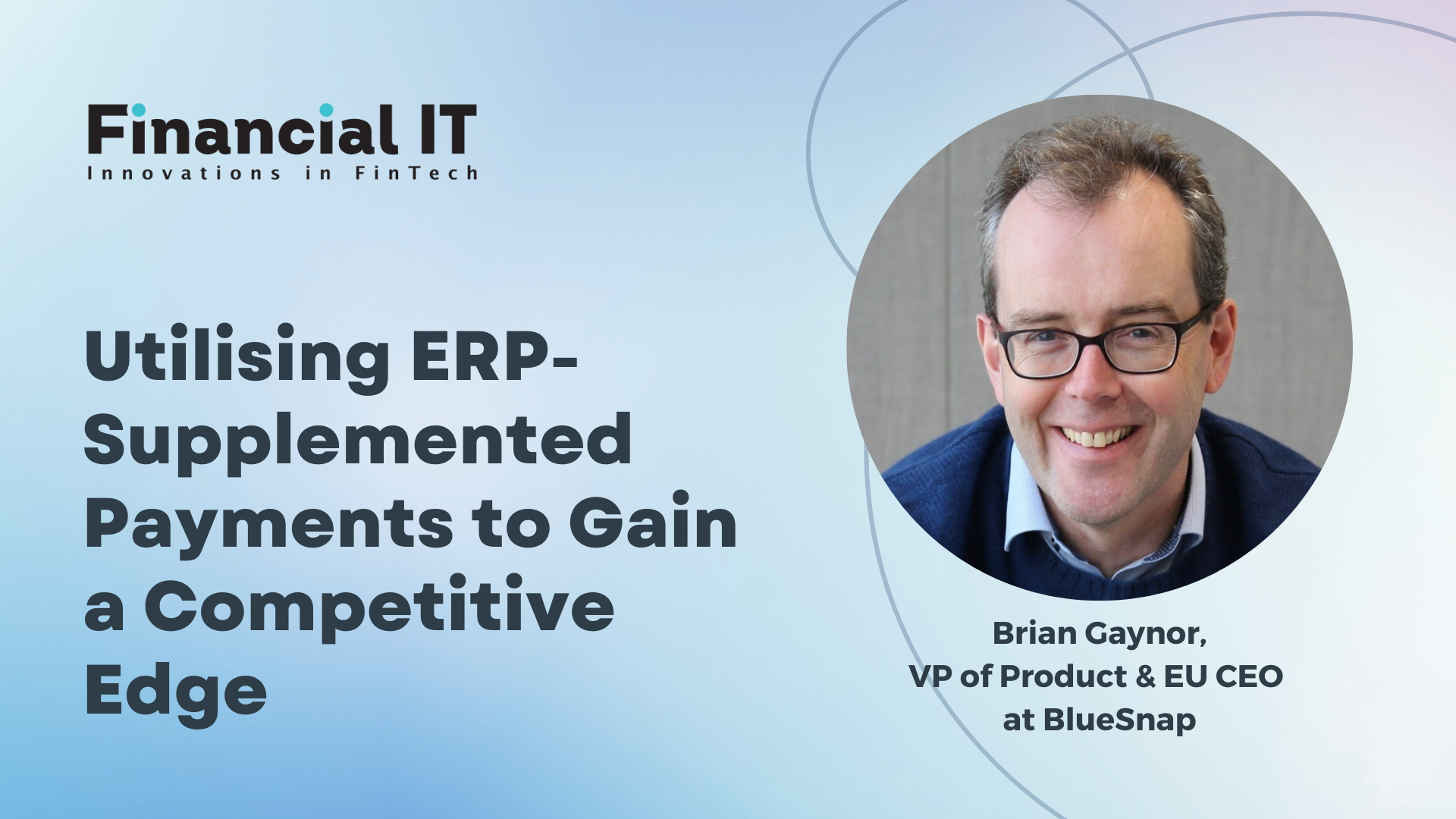Utilising ERP-Supplemented Payments to Gain a Competitive Edge

- Brian Gaynor, VP of Product & EU CEO at BlueSnap
- 03.07.2024 10:00 am #ERP #Payments
Buyer demands, payment trends, and new regulations lead to an ever-evolving payment landscape in the B2B sector. Now more than ever, it is vital to have the right payment provider for your ERP System - one which increases the number of ways to pay and improves the buyer experience.
ERP-supplemented payments are an effective means to avoid costly fees, which improves the business’ agility and competitiveness. It also helps regulate cash flow and improve reporting and reconciliation, and these factors make a huge difference when companies are looking to scale and need to cater to different payment practices.
Last year, 57% of businesses stated that their agility improved due to their ERP System. However, many businesses are still not utilising it to its full potential.
Adding payments to your ERP System
ERP Systems are an excellent way to gather payment data, consolidate workstreams, maintain a growth trajectory, and get an accurate picture of the payment landscape. Adding a Global Payment Orchestration Platform to your ERP System can enable payment acceptance in multiple currencies and payment methods. This brings the dexterity firms need to cater to buyers’ preferences and makes it easier for buyers to complete their transactions.
Buyers too, have their own preferred ways to pay. Offering customers their chosen payment types leads to more revenue via repeat business, a reduction in checkout abandonment, and even increased order volume. When adding payments to an ERP System, offering a variety of payment types can satisfy current and future customer preferences while steering the business towards growth.
Finally, working with the right payment provider gives companies the flexibility to handpick functionalities to cater to multiple use cases across the B2B and B2C spaces. This agility enables businesses to customise services received and optimise their payment strategy at each stage of growth and in every geography. For example, BlueSnap offers additional services like fraud prevention and chargeback management, which can be added on demand. This gives small and medium enterprises the tools they need to compete with large corporations.
Choosing the right payment provider
Several factors need to be considered when searching for the right payment provider. Businesses operating across regions have to tackle high cross-border payment fees, low authorisation rates, differences in preferred payment methods, and global and regional regulatory standards. However, these pain points can be overcome by supplementing an ERP System with a payment provider that has global capabilities to manage multiple currencies, payment types, and fraud and tax regulations in each region.
It’s worth noting that payment providers manage information flow differently and subtle variations like file formats can make or break an onboarding process. The same is the case with additional payment options, which you’ll likely need as the company expands. Your payment partner should guarantee easy integration and deployment with little to no additional coding and development requirements - avoiding surplus costs while supporting business expansion.
Your chosen payment provider must also be PCI compliant and update merchant agreement terms, privacy policy, and cookie usage in line with GDPR requirements so that you mitigate data security risks and steer clear of fines for non-compliance. By choosing a payment provider capable of this, you also avoid the need for additional partnerships in different regions, which reduces your overall technical debt.
Getting the most out of ERP-supplemented payments
Ultimately, ERP-supplemented payments are an asset for any business. By choosing a payment partner that combines the functionalities of a payment gateway and a merchant account, businesses can simplify onboarding and management, reduce costs, prepare for business expansion, and improve efficiency and data security. All this goes a long way in improving buyer trust and satisfaction. Fully incorporating the new payment provider into a corporation’s existing ERP System minimises friction and leverages the capabilities of both platforms efficiently. This also sidesteps duplication of data and gives you a clear overview of the payment landscape.
To maximise the benefits of the assimilation, businesses must automate as much as possible. This could mean standardised reporting or fraud prevention strategies across geographies, but the more your payment partner handles, the less there is to be outsourced.
In a dynamic and competitive landscape, it's the subtle differences that can give a business the edge it needs to stand out and generate higher revenue.
Supplementing your ERP System with payments is an effective strategy for increasing efficiency and optimising operations. If business leaders incorporate the right payment provider with their ERP System, it can act as a catalyst for growth and increase Return on Investment (ROI).
Business leaders should be looking to use ERP Systems to their advantage, those who don’t are missing a trick and risk losing their competitive edge. On the other hand, once your business finds the right payment provider to supplement your ERP System, your growth can skyrocket.




















